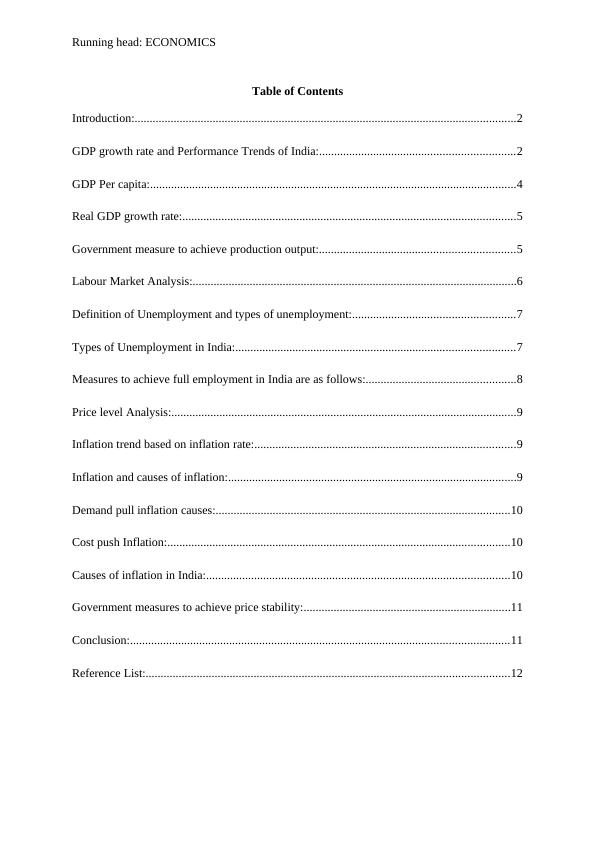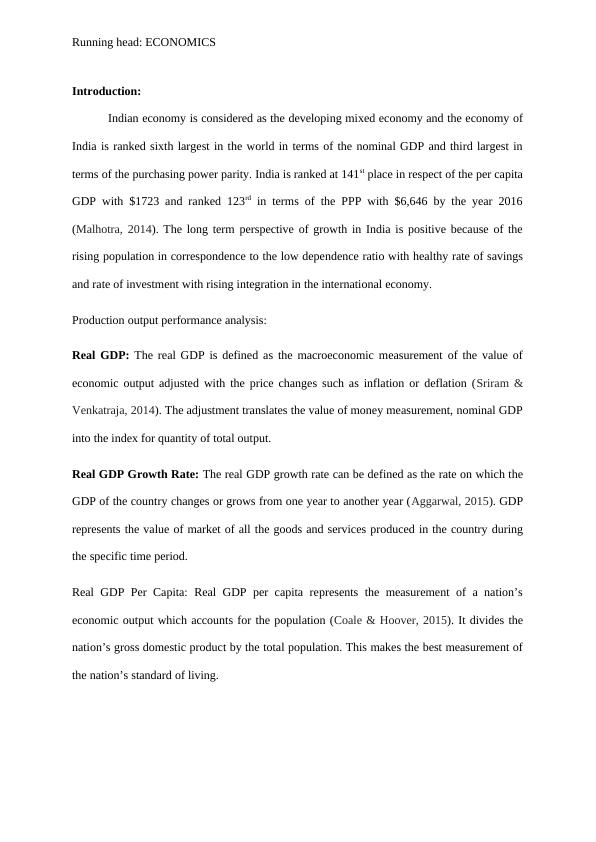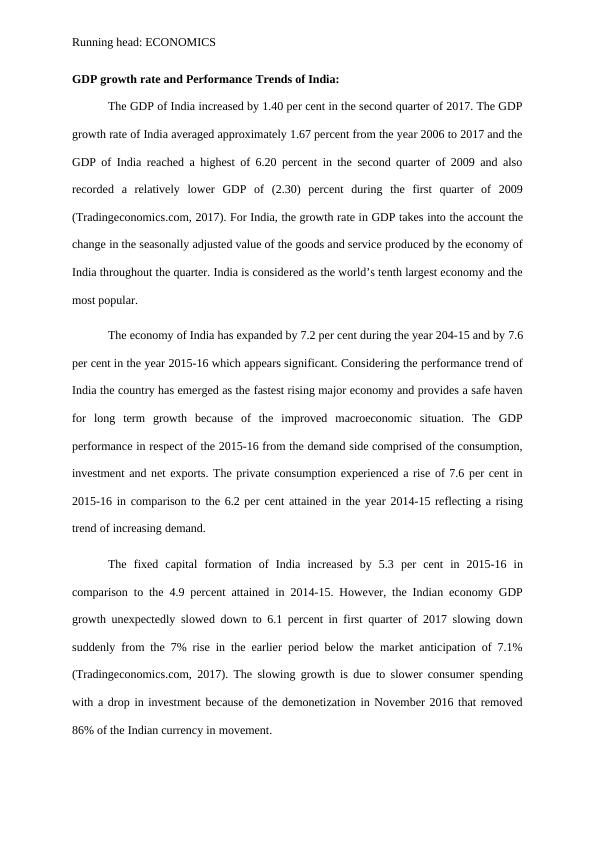The Indian Economy: How to Achieve Production Output
15 Pages3049 Words243 Views
Kaplan Higher Education Institute
Added on 2020-04-21
About This Document
ECONOMICS ECONOMICS ECONOMICS 0 0 Economics Name of the Student Name of the University Authors Note Course ID Introduction: 2 GDP growth rate and Performance Trends of India: 2 GDP Per capita: 4 Real GDP growth rate: 5 Government measure to achieve production output: 5 Labour Market Analysis: 6 Definition of Unemployment and types of unemployment: 7 Types of Unemployment in India: 7 Measures to achieve full employment in India are as follows: 8 Price level Analysis: 9 Inflation trend based on
The Indian Economy: How to Achieve Production Output
Kaplan Higher Education Institute
Added on 2020-04-21
ShareRelated Documents
End of preview
Want to access all the pages? Upload your documents or become a member.
L100 - Performance of UK Economy - Individual Report
|14
|2977
|105
The Economy of Australia - ECCON 101 - Economics
|15
|2918
|63
Analysis of Australia's Economic Performance from 2008 to 2018
|14
|2836
|314
Economics: Production Output Performance, Unemployment, and Price Level Analysis
|15
|3073
|20
Economic Performance of Singapore from 2008-18: Analysis of Real GDP, Unemployment and Inflation
|15
|2891
|207
Economics Assignment: Production, Labour Market, Price Level Analysis
|12
|3047
|157




